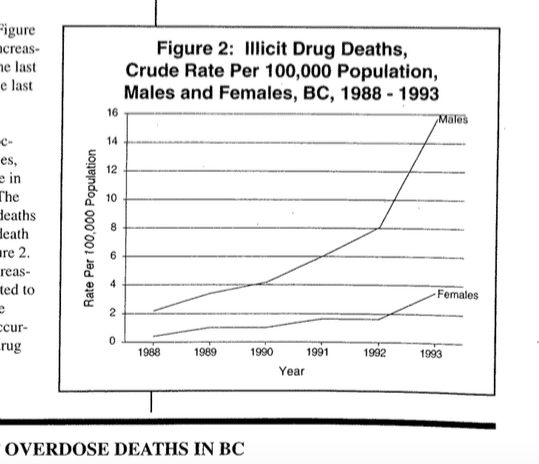Last week, for the National Day of Action for the Overdose Crisis, we marched with 922 feathers, one for every life lost in BC in 2016. Our Executive Director, Donald MacPherson, vividly recalls being in the same place 20 years before for the same reason at Oppenheimer park with 1,000 crosses and his friend Bud Osborn.
Two weeks ago, we hosted an event, convening those from across Canada actively working on establishing supervised consumption services in their communities. The event was opened with a poem. When the poem was read, it stirred a committed sense of determination in the room, fuelled by the shared and extended duration of suffering from the loss of so many lives to accidental drug overdoses.
The poem was written by the late Bud Osborn, who passed away in 2014.
the fight for insite
began in a political/rhetorical atmosphere
of depraved indifference
regarding overdose deaths and pandemic emergency
horrifying ghosts of human beings
calling radio talk shows and actually telling me:
“why don’t they just string barbed-wire
around the downtown eastside
and let them infect each other to death?”
or
“the only good junkie is a dead junkie”
comments like those heard in nazi germany
I remember one welfare week
eleven years ago
sirens screamed lights flashed red and white
all day all night
one hot afternoon that same week
I met a friend of mine
on the corner of cordova and main
she’s a first nations woman and activist
who told me when i asked
how she was
that her family was gathering
to make another crucial decision
her cousin had fixed alone Wednesday evening
in a sro room
and when her husband returned
found her dead on the floor
he made a noose
with a long piece of cloth hanged himself
and soon was dead
and because the couple had an infant son
the family was gathering
to determine the best disposition
for the suddenly orphaned child
and this entire unjust and tragic situation
might well never have happened
if insite was open
but as my friend and I were saying goodbye
a flame burst inside me
fuelled by grief and rage
like a fierce spontaneous combustion
flashing up through my nervous system
and roared in my head like a psychic explosion
because of another
because of too many
because of an unnecessary
overdose death
yelled
two words repetitively in my head
no more! no more! no more!
of this heart-breaking family-shattering community-diminishing
pain of overdose deaths
I immediately ran from that conversation
to see mark and liz and kirsten at the old portland hotel
and with dave diewert ann livingston
and several others
planned a day of action
we pounded 1,000 crosses into oppenheimer park
blocked main and hastings with a heavy chain
and distributed statistics of misery
to commuters unable to get to work
1,000 crosses memorializing just three years of overdose deaths
a cross is a symbol of political execution
a cross is a symbol for social revolution
and form that afternoon
the battle to save lives was declared
the battle to save the lives of those
so many other wanted to die
and from that afternoon
to insite’s opening
we’ve never ceased in our efforts
to save lives and bring peace
because everyone suffers
when compassion is undone
insite vigil poem by the late Bud Osborn
an excerpt from the book Raise Shit! Social Action Saving Lives
co-authored by Donald MacPherson, Susan Boyd and Bud Osborn




 Raffi Balian Memorial February 2017
Raffi Balian Memorial February 2017






